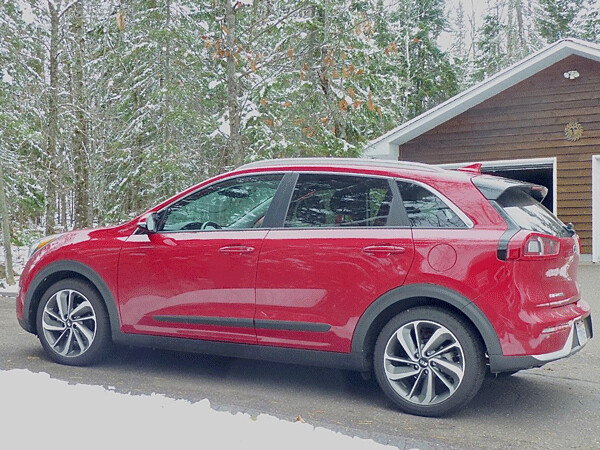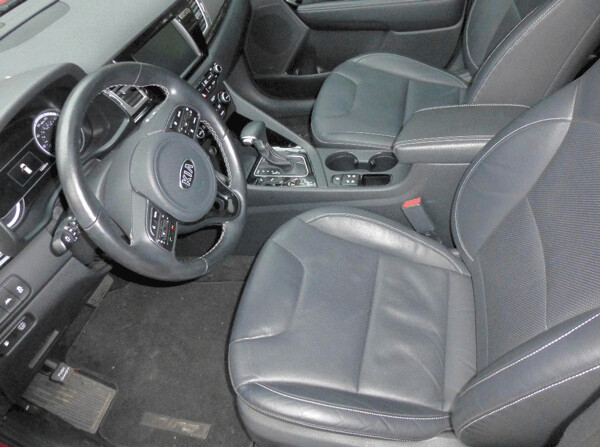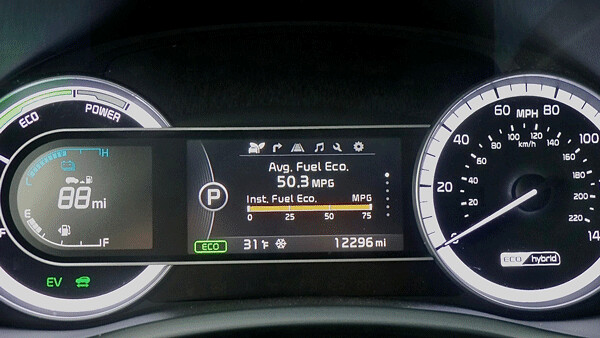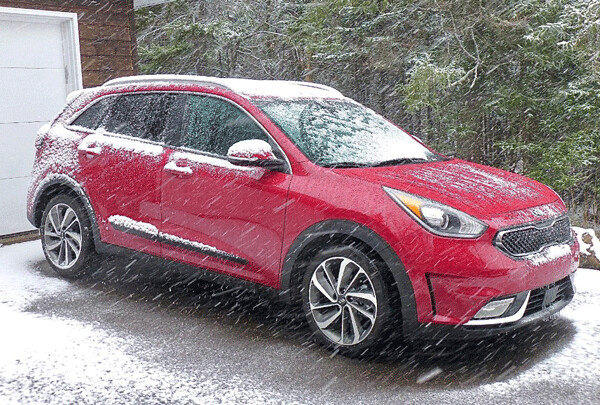News & Articles
Browse all content by date.


With apologies to ducks everywhere, you know the old theory that if something looks like a duck, walks like a duck and quacks like a duck, it must be a duck? How about if something looks like an SUV, hauls cargo like a small SUV, and conveys kids to school, hockey practice or the mall like an SUV, then it must be an SUV, right?
Not necessarily. It could also be a Niro. In the ever-expanding world of compact crossover SUVs, it’s time to stop fiddling and take note of vehicles like the Niro.
It’s a lot like the new Toyota C-HR, which is about the same length and has a lot of similarities as the Niro. The biggest similarity they share is that they have front engines and are front-wheel drive...and that’s it. Neither has availability of all-wheel drive, which pretty much disqualifies both of them from being considered SUV, CUV, or any other “UVs” - or utility vehicles.
The thing here is that the Kia Niro out-Toyotas Toyota in this new cute-wagon-and-don’t-call-me-an-SUV class. Where the Toyota C-HR has a 2.0-liter, 144-horsepower 4-cylinder engine pulling the 3,300-pound vehicle around, slowly.
The Kia Niro, on the other hand, has an even smaller 1.6-liter direct-injected 4-cylinder with 146 horsepower - but it also has the latest and highest-tech 1.56 killowatt-hourelectric battery pack from fellow-Korean electronics giant LG stashed under the rear seat, connected in all the right places to become Kia’s first all-in hybrid vehicle. Combining their power output, the Niro gets 103 horsepower from the 1.6 gas engine, plus 43 horsepower from the electric motor, boosting total torque to 195 foot-pounds.
Then there’s the transmission. Most hybrids drone along with a continuously variable transmission. Kia uses the Hyundai-built 6-speed dual-clutch automatic transmission, which feels so much more potent than any CVT, and can be operated as a sport model, engaging in manual shifting. Kia also put upgraded tires on the Niro, with Michelins on the test car. That helps the lightweight Niro and its potency run swiftly and benefit by a low center of gravity.

Like the Ioniq, the Niro placement of the long, slender lithium-ion-polymer battery pack is under the rear seat, leaving seatroom unencumbered, and making the cargo area available for a sizeable stash, greatly increased if you fold down the second seat. Hybrids with the battery pack under the rear cargo floor are quickly identified by their lack of cargo space.
Kia, which has thrived since rising from being a rescued company by Hyundai to a joint partner with Hyundai. That merger/takeover happened about a decade ago, just as Hyundai was breaking into elite technology status. Perfect timing.
A year ago, Hyundai brought out the Ioniq, a slick compact sedan that comes in your choice of alternative energy, hybrid, plug-in hybrid, or full-fledged electric. All three versions are impressive ways to give Hyundai a place-setting at anybody’s alternative energy banquet table.
In their recent attempts to differentiate the formerly comparable vehicles, Kia didn’t want a slick little compact hybrid, so it built the Niro, by placing a hatchback, wagon/SUV styled body on top of an Ioniq platform, which Hyundai says is a very flexible item that is nothing short of futuristic. So here comes the Niro, and it looks like a crossover SUV, fills with cargo, people and stuff like a crossover SUV, but actually can attain incredible fuel economy more comparable to a Prius than any of Toyota’s small SUVs.
I always enjoy the personal challenge of driving a hybrid vehicle for optimum efficiency, disciplining my inner-racer to not make drag-race takeoffs, and to not jump on the gas to battle somebody in the other lane, and to not stay on the gas pedal when you see a light turning amber a half-block ahead. If you instead brake, lightly and gradually, you benefit from regenerative braking and can cause a surprising peak in fuel economy.


When I got the car delivered on the North Shore of Lake Superior, I noted that its trip computer showed 24 miles per gallon. My wife, Joan, who doesn’t always share my one-upmanship tendencies to get great fuel economy, drove it for a couple of days and got it up to 26 or so, but expressed dismay that it wasn’t better than that.
Facing more than the usual pressure, I took over the Niro for the next few days. Staying off hard-throttle driving, and starting up moderately, as well as negotiating Duluth’s downhill slopes with gentle breaking, the results were impressive.
The official EPA estimates for the test Niro Touring are 46 city and 40 highway, for a 43 miles-per-gallon average. On my dedicated trial while making my normal rounds for several days showed the trip computer rising up, up and over the 50 mpg plateau, hitting a best figure of 52 mpg. I shot a photo of the instruments after 88 miles of such driving, proving that it could get over 50.


Aside from looking impressive and beating the EPA top numbers, the Niro feels stable and is almost eerily quiet. Aside from the full plan of safety technology, with blind-spot detection, rear cross-traffic alert, lane departure warning, and autonomous emergency braking, the comfort meter runs high as well. The plush leather makes the seats feel evern better than they otherwise might, with proper support, and touch-screen navigation as well as heated and cooled seats and a simple to operate connectivity system.
The quiet interior is greatly aided by the liberal use of high-grade steel - Hyundai owns its own steel plant, a first in the auto industry - with a solid safety structure. Then the pillars are filled with foam, the steering wheel is damped to limit surprises, and acoustic glass complements the structural improvements.
With foam-filled A and B pillars, reduced-noise engine mounts, foam located strategically throughout, makes you not notice what you don’t have - noise.
At a base price of $22,050, there are nine Niro models to choose from, up to the Limited Ultimate at $32,450. With varying emphasis on perforance and economy, Niro engines vary from the 2.4 down to the 2.0 turbo, and 1.6 turbo.
Just remember, Nero fiddled, while Niro just gets you home with 50 miles per gallon. Still, as an early season snowstorm decorated the bright Crimson Red test car with white, I’m going to have to ask if any new technology can offer an all-wheel-drive unit on the hybrid Niro.
| Tweet |

